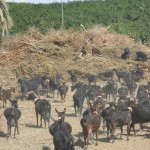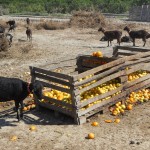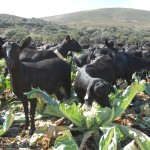Summary of final reports:
This document described the work conducted in two dairy goats farms to assess the suitability of using silage made from tomato and olive by-products (farm 1) and citric by-products (farm 2) on the overall feeding strategy of the farm. The work was conducted during 2013. Previous results (i.e. SOLID Deliverable 3.1. Desk-top review of novel feeds for inclusion in organic and low-input dairy production) demonstrated the potential of a range of by-products and underutilized sources as animal feeds and highlighted the need for additional information concerning certain by-product feeds that should be obtained through a strong farmer and stakeholder interaction in order to guide the future research.
On the first farm a significant proportion of the forage is grown at the farm and most of the grain has to be acquired from outside. No by-products are used currently in the feeding strategy. On this farm the use of tomato and olive silages was investigated as a replacement forage source.
On the second farm the use of agro-industrial by-products is totally integrated in the feeding system. In this case citric (orange and lemon) fruits and leaves from a nearby citric cooperative are used continuously throughout the year.
The agro-industry sector in Southern Europe provides a range of valuable by-products with potential to be used as feed for small ruminants; however, the high moisture content represents the main limitation for the successful and wide use of some by-products by the feeding industry. Ensiling represents a promising option: silages made with tomato and olive by-products may replace medium quality forage (i.e. oat hay) in dairy goat farms provided that the farm is within 50 km from the site of production of the by-product.
In farms using citric by-products with an external input of concentrate, the quality of the forage has been identified as the weak point in ensuring efficient milk production over the entire lactation period.



